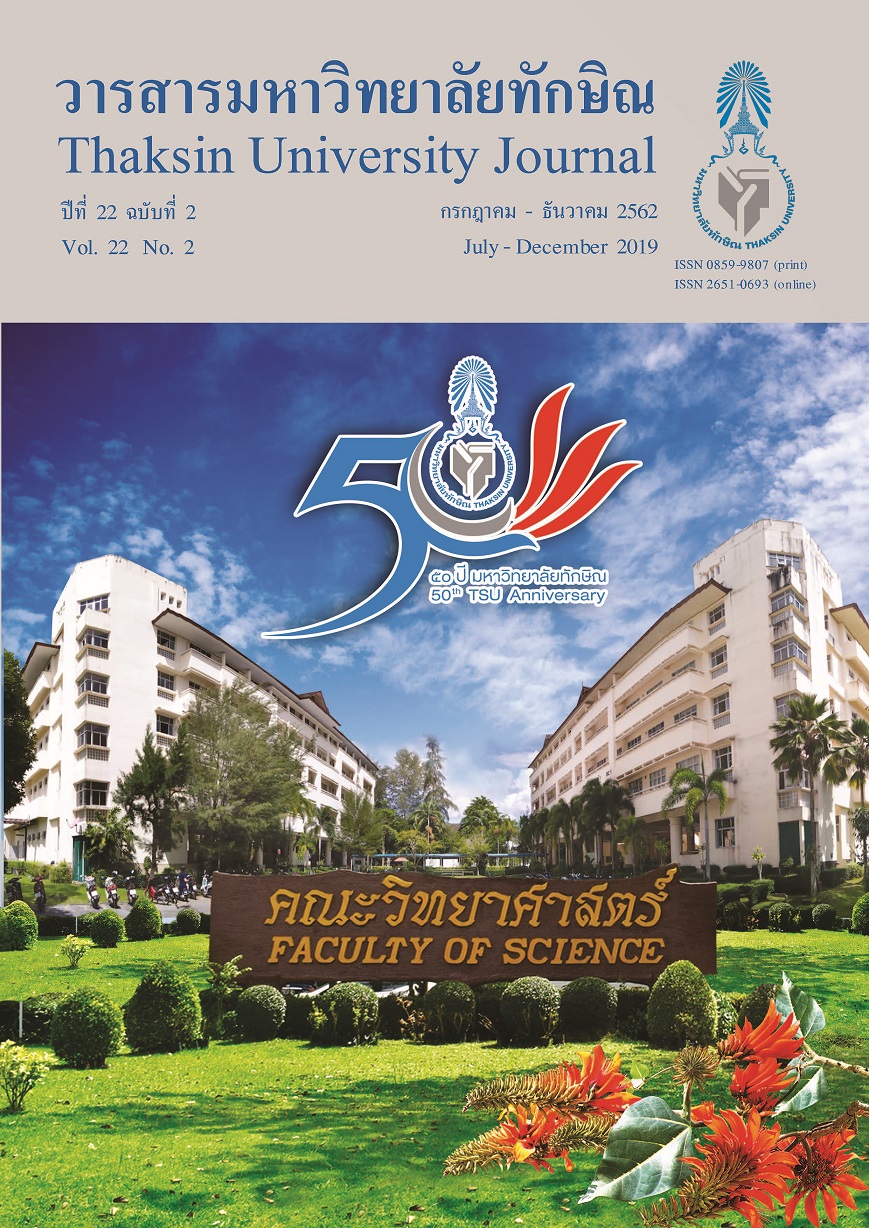Performance Comparison of Automatic Para Rubber Tapping Machine and Jeh-bong Knife
Main Article Content
Abstract
The research studied the tapping performances of the automatic para rubber tapping machine and jeh-bong tapping knife by using the RRIM 600 clone rubber trees at 7 years of age in Surat-thani province. The jeh-bong tapping used s/3 d1 3d/4 system. The obtained average values of; tapping depth was 5.6 mm, tapping distance was 17 cm, bark consumption was 1.9 mm/tapping or 26.5 cm/year. The tapping rate of jeh-bong knife was 0.8 cm/s. The machine tapping performance was then compared to that of the jeh-bong knife tapping. Its bark consumption was 2.8 mm/tapping which was similar to that of the knife. Its tapping speed was 0.24 cm/s which was slower than the knife. Its tapping depth and tapping distance were 3.0 mm and 9.0 cm and these values were less than that of the knife. Based on the obtained tapping performance, there is a need to improve the machine which is too heavy. The excessive weight demanded a high power from the motor driving the vertical motion and slowed down the blade. A light and strong material shall be used. The inconsistent tapping degree was due to the varying distances between the guiding rail and the tree trunk, consequently, it affected the tapping depth and consistency of the tapping. A blade carrier which can control its distance from the tree trunk or with an adjustable tapping degree shall be applied.
Article Details

This work is licensed under a Creative Commons Attribution-NonCommercial-NoDerivatives 4.0 International License.
References
Rubber Research Institute. (2017). Statistic for Thai Rubbers. Retrieved 9 February 2018, from https://www.rubberthai. com/statistic/stat_index.htm. (In Thai)
Rubber Research Institute. (2012). Annual Academic Rubber Information on 2012. Department of Agriculture, Ministry of Agriculture and Cooperatives, Bangkok, Thailand. Retrieved 9 February 2018, from https://ag-ebook.lib.ku.ac.th/index.php/component/content/article/523.
Sopchok, P., Jantuma, P., & Paechana, P. (2007). Para Rubber Tapping and Use of Chemical to Increase Latex. Rubber Research Institute, Department of Agriculture, Ministry of Agriculture and Cooperatives. (In Thai)
Chantuma, P. (2001). Physiology of Rubber Trees and Tapping Systems. Annual Rubber Conference in 2001, Chiangmai, Thailand, 20-22 February 2001, 78-89. Retrieved 10 March 2018, from https://it.doa.go.th/kasikorn/year-53/jan_feb_53/part-2.pdf. (In Thai)
Seangdang, Y. (2012). Design and Prototyping of the Pararubber Tapping Machine by Using Electrical Motor. Master Degree Thesis, Suranaree University of Technology. (In Thai)
Mueangdee, N., Mahathaninwong, N., Kongtim, P., Anancharoenwong, E., & Marthosa, S. (2017). Automatic Para Tapping Machine. Research Report. Prince of Songkla University. (In Thai)
Mahathaninwong, N., Chucheep, T., Muangdee, N., Petnikom, P., Suwanmanee, A., & Chuaymeung, A. (2016). Rubber Tapping Blades for Automatic Rubber Tapping Machine. Thaksin University Journal, 19(2), 23-31. (In Thai)


